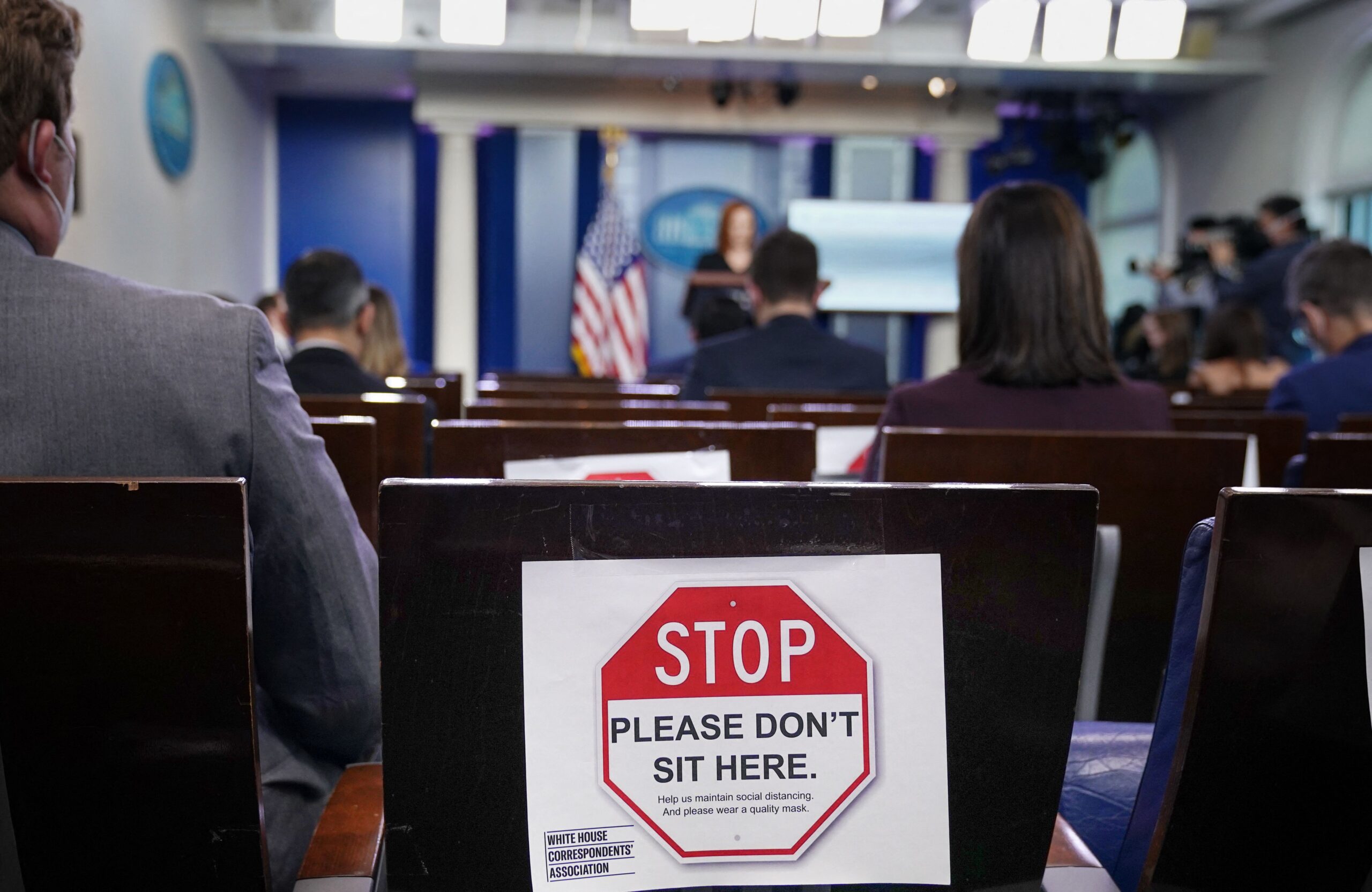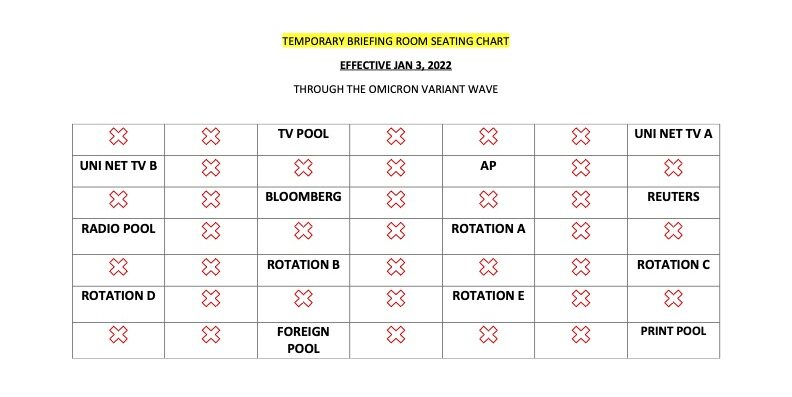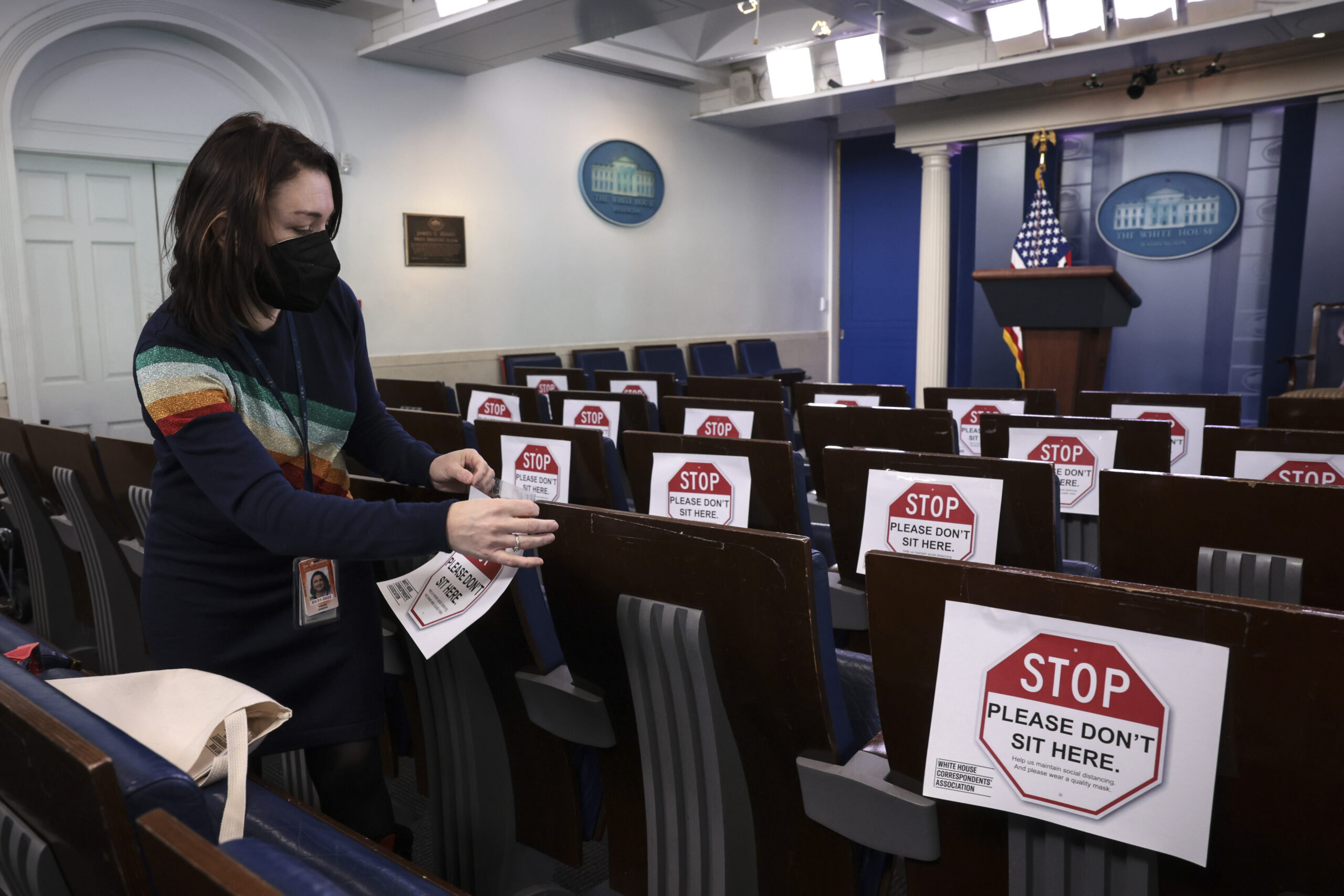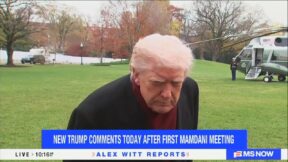White House Correspondents’ New Briefing Room Protocols Are Arbitrary and Out of Touch

Mandel Ngan/Getty Images
And then there were 14.
The White House Correspondents’ Association announced, earlier this week, that 14 will be the number of seats available in the James S. Brady Press Briefing Room amid a spike in coronavirus cases driven by the Omicron variant.
The policies are arbitrary and out of touch.
In an email on Sunday evening to members of the White House press corps, WHCA president and CBS News White House correspondent Steven Portnoy said (emphasis his):
We remain in a COVID-19 wave that appears far from cresting. In fact, experts believe the current Omicron surge won’t dissipate in much of the country for another month or so. We have every reason to believe that case rates will continue to increase in the greater Washington area – and in our press corps – after holiday gatherings.
Given the virulence of the spread, medical experts have once again advised that it would be prudent to substantially reduce the number of people working in the cramped, poorly ventilated workspace that we share.
Acting on that advice, your board met in emergency session this evening and unanimously approved a motion to temporarily return the briefing room to 14 seats, as drawn on the attached diagrams.
…
Beyond the seat restrictions noted above, we continue urging members to only come into the White House as a function of the assignments given to them expressly by their managers. We now expect that every person who comes into the White House will take it upon themselves to secure a covid test beforehand. We continue urging the use of N95 or KN95 masks to comply with our indoor masking requirement.
For one, as of Dec. 21, at least 97 percent of White House reporters are vaccinated and boosted, according to a survey of WHCA members (And I was told that the number has since increased as there were WHCA members who got boosted but weren’t part of the survey). While the risk of contracting Omicron appears to be higher for the vaccinated than previous variants, vaccination still provides great protection against hospitalization. The new variant is milder: fewer people are being hospitalized by it, and for those who do experience symptoms, those symptoms are milder.
No vaccine is foolproof. There’s always the chance of experiencing undesirable outcomes despite taking sound precautions. The coronavirus isn’t going away anytime soon, and draconian measures are unsustainable.
Speaking of measures, the seating arrangement doesn’t allow for much in the way of social distancing, as you can see in the chart and photo of the room below.


Win McNamee/Getty Images
For the vaccinated who experience a breakthrough case, the symptoms are something akin to the flu. Those in the White House press corps who experience this can and should simply not go to the briefing room and self-isolate. No need to close off chairs in the room in some attempt at Covid-safety theater. What’s more, most people are tired of remote work. One poll showed 87 percent of Americans ready to head back to the office in person.
Still, some reporters in the White House press corps objected to the packed briefing room as Omicron spread rapidly through the United States in December.
Indeed, the announcement from the WHCA came after reporters called on White House Press Secretary Jen Psaki in December to make the press briefings virtual amid Omicron. Psaki has resisted the idea.
“We don’t think it sends the right message to the country or the world to close the briefing room or pause in-person briefings,” she told The Washington Post in a statement.
While people should be smart amid the coronavirus – which is looking like it will be endemic for the foreseeable future and should be viewed through a symptoms-based lens as opposed to alarmism about cases – thanks to the vaccine and boosters, they can live their lives. White House reporters are no exception. Instead of waiting until Jan. 21 to revisit the decision, as mentioned in Portnoy’s message, the new restrictions should be scrapped and the White House should have full press briefings with a virtual option available for those who do not want to attend, or cannot attend.
Students are going back to school in person. Blue-collar laborers are already working in person. Why should White House reporters be any different when it comes to showing up to the briefing room at 1600 Pennsylvania Avenue to ask questions that should be in the interest of the American public?
This is an opinion piece. The views expressed in this article are those of just the author.




